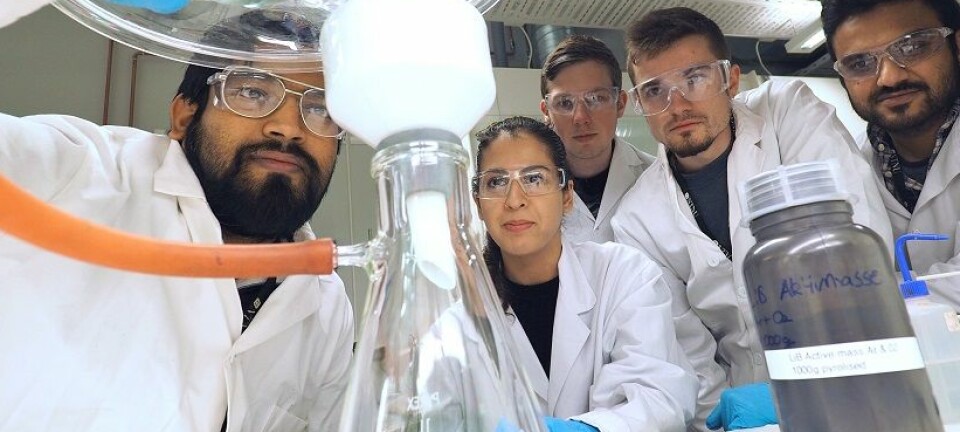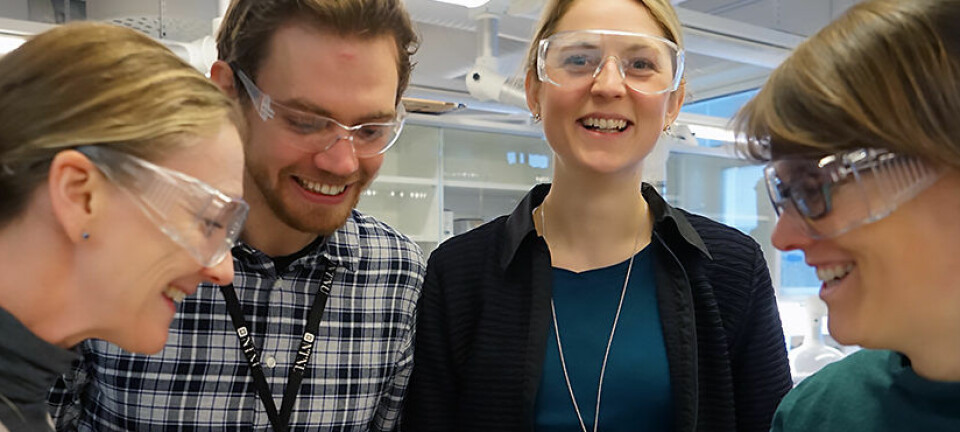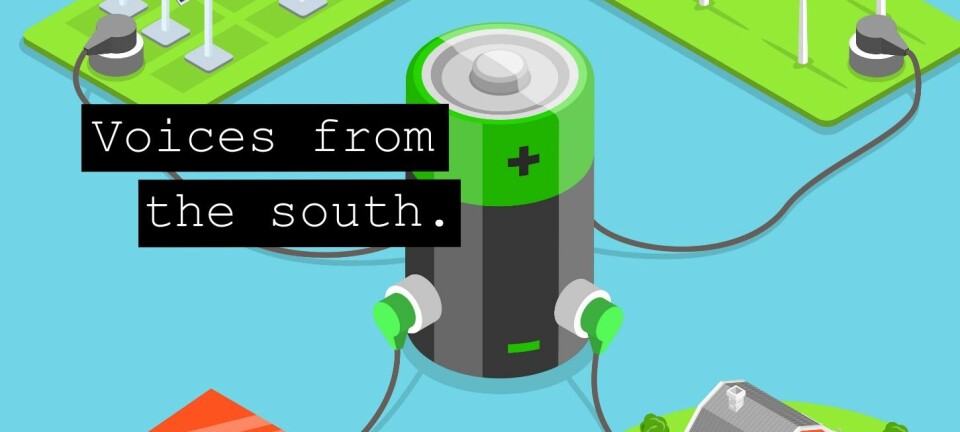
Smartphones still need to be charged daily. So what's happened to the battery revolution we've been promised?
The media often portray laboratory results as market-ready products, one battery researcher says.
You’re about to buy a bus ticket from the app on your phone and cross your fingers that the 15 per cent of the battery that’s left will get you safely home. But no, the high-end computer you carry everywhere has run out of power. Again.
So when is the big battery revolution coming? Media accounts constantly report that we can expect it next year. Hanne Flåten Andersen, head of the Department of Battery Technology at the Norwegian Institute for Energy Technology (IFE), believes these sensational media reports are often misleading.
“We see an evolution in battery technology, while journalists often talk about a revolution,” says Andersen.
She also points out that batteries have, in fact, become much better in recent years.
“Think about what you used your phone for five years ago, compared to what you use it for today. The battery has become five times better, even though you have to charge it every day. Your phone does so much more compared to five years ago, when you used it mostly to call people and send texts,” she said.
Scientists and engineers all over the world are working hard to prevent batteries from being a bottleneck for new technology. But contrary to the impression we get from the media, these developments will proceed slowly but surely, Andersen says.
Can be twice as good
So what kinds of improvements can we expect?
Researchers will probably continue to refine the technology that’s already in use today, says Ann Mari Svensson. Svensson is a professor of materials technology at NTNU and studies the battery technology currently used in mobile phones and electric cars, lithium-ion batteries.
“I definitely think it’s possible to increase the amount of energy per weight compared to the batteries we have today. It might be possible to double this value,” Svensson says.
In other words, the batteries will weigh the same but will have twice the energy.
“Others are studying new concepts for batteries, but these new approaches are generally difficult to realize commercially, and there are no good solutions as of today,” Svensson says.
The work of thousands of people and years
The nice thing about the batteries in today’s mobile phones and electric cars is that lithium is the lightest metal found on Earth. And it reacts very easily with other substances.
That makes it possible to create a battery with two poles and make the charged lithium ions flick back and forth between the poles.
When we use the battery, lithium moves from the minus side to the plus side. At the same time, the electrons pass through our electronics and power them.
And when we recharge the battery, we force lithium back to the minus pole.
But even though this technology sounds relatively simple, it has not been easy to make.
“It took about 25 years and many thousands of person-years to develop the lithium-ion battery we use today,” says Svensson.
The Nobel Prize in Chemistry in 2019 went to three researchers who contributed to this rechargeable battery.
But while there is no lighter substance to use than lithium, there are many other improvements that can be made to build a lighter battery with more zip.
Heavy poles
The key here is that batteries contain so much more than lithium. Many researchers are working to find lighter materials that can be used as the two poles in the battery.
These poles, or electrodes, are crucial for the magic to happen, according to battery researcher Halvor Høen Hval at the University of Oslo.
“The plus side is a kind of ‘bookcase’ with space for lithium, and the minus side is another kind of bookcase with space for lithium. And these ‘bookshelves’ weigh much more than the lithium itself,” says Hval.
In fact, the weight of the lithium makes up only about two per cent of the weight of the batteries, Hval says.
Toyota promises solid-state battery for the Tokyo Olympics
One approach is to replace the "heavy bookcase" on the minus side with pure lithium. That is, the minus pole would be made of the same substance that creates the current. This would result in a smaller battery with more energy.
But the problem is that these kinds of batteries are dangerous. Batteries with pure lithium metal on the negative pole can short circuit and cause a powerful explosion.
Instead, what might work is what are called solid-state batteries. There have been rumours that Tesla is working on exactly this kind of battery, and Toyota has promised that they will unveil a new electric car with a solid-state battery for the Tokyo Olympics in the summer of 2020.
Andersen thinks these batteries will come to the market in the long run, but she’s not sure when.
“Solid-state batteries can be a way to go if you make them work. But there have been many media reports suggesting that they will come next week, without us having seen anything yet,” she says.
Can shape the battery to match the car
But what are the advantages of a solid-state battery?
Think of the popular science fair experiment, where a lemon is used to make a battery. A lemon can provide power and make a light bulb glow with just two nails and a wire. The two nails are the poles, and the lemon is what is called the "electrolyte" in the battery.
In today's batteries, the electrolyte is a liquid, much like the lemon juice. This makes it easy for the charged ions to move back and forth from pole to pole. But it also increases the danger of short-circuiting.
A solid battery would allow the use of pure lithium metal on the minus side because it eliminates the danger of explosion, according to Hval.
It would also allow the creation of completely different battery shapes, which could be especially good for electric cars. For example, the weight of the battery could be distributed more evenly throughout the car.
Small improvements
At the same time, many researchers are working on other ideas, mainly in terms of making the two poles lighter.
Researchers at the Norwegian Institute for Energy Technology are among those trying to cut weight on the minus side of the batteries. They are doing this by adding the silicon to the negative pole, which today is made of graphite.
“Silicon itself can store ten times more than lithium, but it can become unstable. That's why we add some silicon to improve the minus pole,” says Andersen.
At the same time, she believes this is a good example of how new technology is quickly oversold by the media.
“The materials we are studying are extremely promising, but we are currently working at a laboratory scale. The media often portrays this research as ready-for-market batteries, even though the road to upscaling and commercialization is long. I often get inquiries from interested customers who want to buy batteries from us, preferably tomorrow,” says Andersen.
Cobalt and child labour
Hval says the biggest benefits can come from improving the plus pole. The materials used for this pole are very heavy.
One of the substances used in the plus pole is cobalt, the sourcing of which has a rather bad reputation due to ethical issues. The families of dead and injured child workers in cobalt mines in the Democratic Republic of Congo have sued Apple, Google, Tesla and Microsoft.
One possible alternative to today's plus pole might be to use sulphur. Another may be to collect oxygen from the air.
Won’t feel like a revolution
But no matter how clever the improvements developed by scientists and technologists are, consumers aren’t likely to feel like it’s a revolution. On this, the three battery researchers agree.
It doesn't really help if one component of the battery is improved, if all the other parts aren’t improved at the same time.
“There are so many things that need to work together. If one player on a football team plays twice as well as he or she once did, the team overall won’t be twice as good. Batteries contain so many components that have to work together, and these interactions are incredibly complex. So that's why we’ll have to wait for this revolution,” Hval says.
And even if the battery in our mobile phone becomes twice as good as it is today, we may not even notice — because we’ll be asking that little computer in our pocket to do even more than it does today.
———
Read the Norwegian version of this article at forskning.no


































